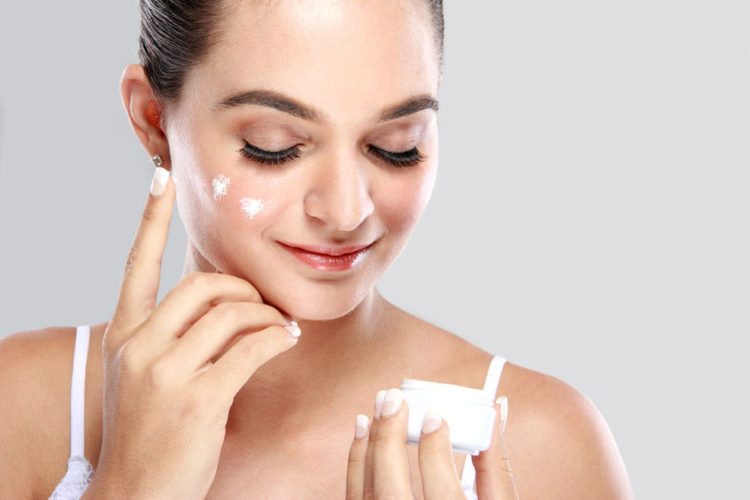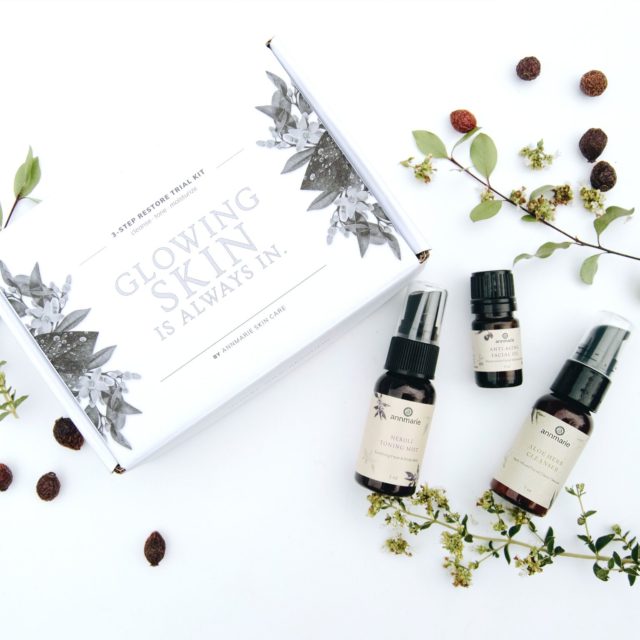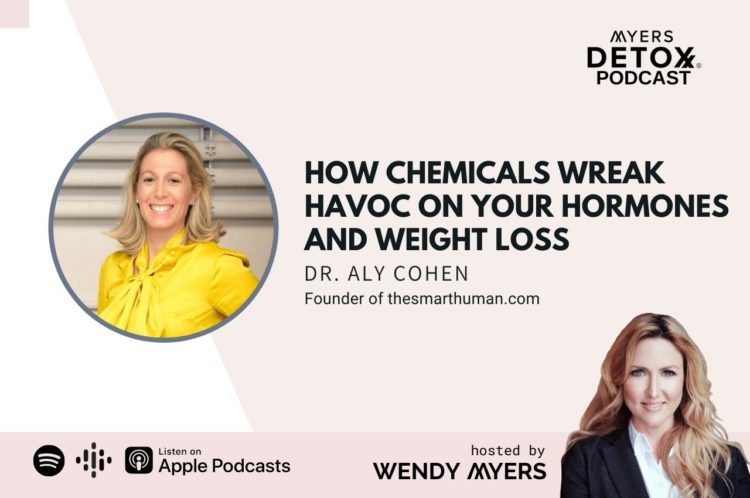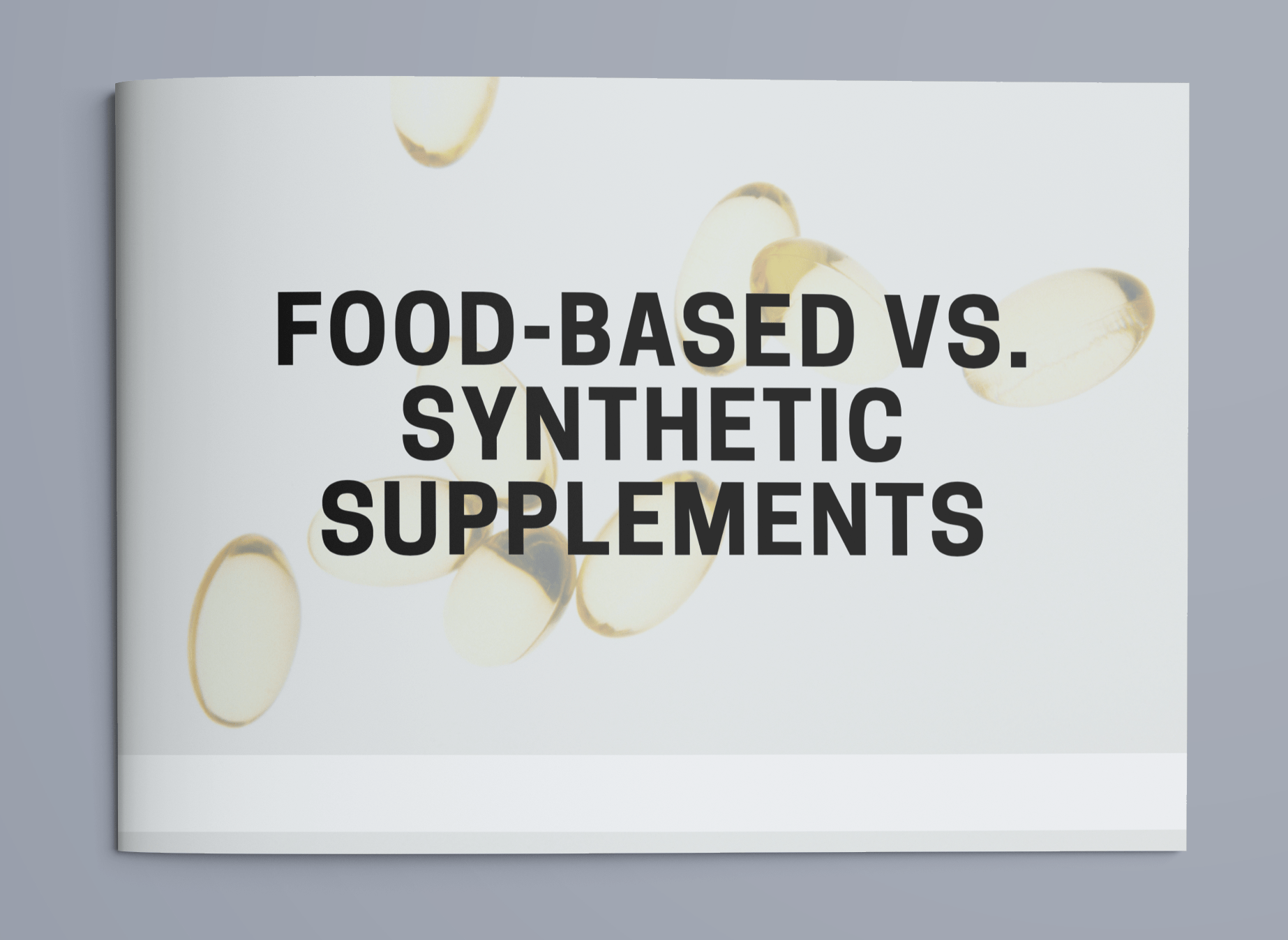10 Ingredients You Definitely Don’t Want in Your Skin Care

Every once in awhile, I get the urge to walk into a convenience store and nonchalantly browse the skin care aisles. I pick up a plastic bottle with some pseudo-fancy label claiming to have discovered a purer form of collagen or some advanced wrinkle-eraser ingredient. I put myself in the shoes of the consumer and think, “I’m sold!”
But these companies don’t fool me.
Instead of falling for these sneaky marketing ploys and getting captivated by words that promise me beautiful skin, I simply turn over the bottle and read the label. After scanning several lines of ingredients and vowel-heavy words that I can’t pronounce, I wonder if consumers have the same reaction as I do when I think about applying these formulas to my precious skin. I wonder if consumers are even reading the labels to begin with?
If you aren’t one to read labels, or can’t quite get yourself into the habit of it, this article may inspire you to start doing so. If you care enough to buy products based on what the marketing claims, what if the cards were turned? What if skin care products were labeled “ineffective, petroleum-derived, chemical-ridden goodness inside?” Would you still buy them? I don’t think so.
As consumers become educated on ingredients and their effects (or ill effects), all of those mind-boggling chemicals listed on the label will start to become more transparent. Beauty companies can’t fool you when you can decipher what’s really in their products!
Here is a list of no-go list of toxic, “unbeauty” chemicals to give you 10 more ingredients you definitely don’t want in your skin care. Add these to your own skin care guide, so you can begin making conscious decisions when shopping for that pretty skin of yours!
1. Phenoxyethanol
We’re seeing fewer chemical preservatives, a.k.a “parabens,” on labels (though they are still out there, so keep your eyes peeled). Because consumers have become aware of the potential problems with parabens, a newer preservative, under the name “phenoxyethanol” (or ethylene glycol monophenyl ether), has emerged into conventional and even “certified organic” skin care as a safer alternative.
But is it really?
Phenoxyethanol is commonly used in a variety of skin care products ranging from facial and body cleansers to moisturizers and make up. Several studies demonstrate this preservative shows toxic effects to the body in moderate concentrations. These effects include:
- reproductive and developmental complications
- contact dermatitis (skin irritation)
- damage to the brain and nervous system
Japan recently banned the use of phenoxyethanol in all cosmetics, while most other countries have limited its use to 1% concentration. Is it just me, or does the U.S. always seem a bit behind?
2. Aluminum
Some studies have linked aluminum to Alzheimer’s disease, though recent research has cast doubt on the connection. Other studies have indicated that aluminum may be linked to breast cancer and other brain disorders. Aluminum, in the form of powder, is used in self-care products such as antiperspirant deodorants.
Aluminum is unequivocally a neurotoxin. It can cause irritation to the skin, it’s an endocrine disruptor, and it causes birth disorders in animals.
The average person will consume, absorb and/or eat three pounds of aluminum in their lifetime. Wow! Think about that next time you reach for Dove or Old Spice on the shelf. How about you ditch the toxic load and coat your pits with Primal Pit Paste instead. It’s a team favorite!
3. Formaldehyde
Formaldehyde is a known human carcinogen linked to leukemia, pancreatic and skin cancer, skin irritation, and cirrhosis. It is typically found in nail polish, eyelash glue, and hair smoothing and straightening products like the popular Brazilian Blowout treatment.
This chemical is a little more inconspicuous, meaning that it’s not often listed on a product label, but rather “released” from preservatives. These preservatives include:
- DMDM hydantoin
- Imidazolidinyl urea
- Diazolidinyl urea
- Quaternium-15
- Bronopol
- 5-Bromo-5-nitro-1
- Hydroxymethylglycinate.
If any of these chemicals are listed on the label, avoid the product.
4. Tetrasodium EDTA
Previously discussed in one of our Ingredient Watch List articles, tetrasodium EDTA is circling back around. Keep a look out for this chelating agent, which is cytotoxic and genotoxic. Clinical tests show that tetrasodium EDTA increases the penetration of other chemicals. This is concerning, as this chemical is often contained in formulas with other ingredients that are deemed unsafe. I’d say put the product back on the shelf if you spot this ingredient on the label.
5. Dioxins
Belonging to the “dirty dozen” list of dangerous chemicals, dioxins are of high concern. Existing in the food chain as environmental pollutants, dioxins have made their way into many skin care products. Because they are persistent compounds, they linger inside of our body for long periods of time.
According to the EWG’s Skin Deep Cosmetic Database, dioxins are known endocrine disruptors, strongly linked to cancer and toxic to the organ system and human development. Dioxins will not be listed on a label, but are often contained in antibacterial agents such as triclosan, PEGs and sodium laureth sulfate.
Dioxins are also found in non-organic tampons, as most conventional cotton is genetically engineered, sprayed with pesticides, and treated with bleach. Ladies, next time you’re having “moon-time,” phase out the conventional tampons and look for organic cotton instead, or try some other comparable alternatives.
6. Toluene
Toluene is often used in glues, adhesives, chemical detergents, dyes, paint and paint thinners, plastics and many other industrial substances. Why would we want that in our skin care? Look out for this shady chemical also hiding under the names: benzene, methylbenzene, toluol and phenylmethane. You may see it in nail polish or hair coloring products. Read more about toluene’s toxic effects here.
7. Triethanolamine (TEA)
There’s tea (a nice herbal blend steeped in warm water), and then there’s TEA. These two are not to be confused, and we much prefer the first.
TEA is a fragrance ingredient, pH adjuster, surfactant, and emulsifier. It’s found in soaps, hair care, lotions, make up, perfumes and sunscreens. The health concerns include cancer, organ system toxicity, allergic reactions and bioaccumulation in the skin. Animal studies also show that even at low doses applied topically, it was linked with cell mutation.
Look for it under other names like DEA and MEA on the labels, too.
8. Para-aminobenzoic acid (PABA)
PABA is one of those dated ingredients, but it’s an important one to keep a lookout for, as it’s still out there in the world of sun protection. PABA is not known to wreak havoc in our bodies like other chemical UV blockers such as oxybenzone, but it raises a red flag for allergic reactions. There have been several reports on the high percentage of people using PABA on their skin who have experienced allergic contact dermatitis as well as photocontact dermatitis.
Even PABA-esters, which have taken the place of PABA and are milder, have still caused the same skin reactions.
9. Plastics
It seems that over 90% of conventional skin care products are packaged in plastic these days. What’s up with that? Would you grow an organic garden in the middle of a petroleum plant, and enjoy eating from it? I feel the same about skin care. If you spend all this time creating a beautiful product with organic plants, herbs and high-quality ingredients, wouldn’t you want to store it in something that protects the integrity of the formula?
Storing products in cheap plastic shows a lot about the quality of the skin care. Opt for BPA-free plastic when glass is not possible, because Bisphenol A (BPA)—the compound found in plastic—can leach into skin care products. Research has shown that BPA can be absorbed through the skin and we don’t need any more estrogen-mimicking happening in our bodies. (I don’t know about you, but I have enough hormonal swings as is!)
We love using miron glass for our products, and when we can’t use glass, we always use plastic that’s free of BPA!
Glass is the best option for storing skin care, but do remember to still read the labels, as even the “top-shelf, high-end” skin care products packaged in glass are filled with chemicals. Hey, being an ingredient investigator is fun, and your skin will thank you.
10. DEET
Because it’s summer time, I believe it’s appropriate to tap on this potentially harmful chemical. DEET (N,N-Diethyl-meta-toluamide) is considered to be a neurotoxin, although more extensive research is required to prove this. Some studies have suggested that formulas containing concentrations over 30% are toxic.
Long-term and heavy exposure to DEET caused brain cell death and behavioral changes in rats, which is why manufacturers recommend you avoid spraying it on your face or inhaling it while applying.
Overuse of DEET has resulted in lethal incidents. There were eight related deaths to DEET between 1961 to 2002, three of which were from ingestions and five of which were from skin exposure (heavy and recurring applications of DEET).
DEET is a man-made chemical that can dissolve plastic. Seems pretty harsh, yeah? Let’s pass on that and look for bug sprays made with essential oils that repel mosquitoes just as effectively. Better yet, make your own! Citronella, eucalyptus, cedar wood, lemongrass, lavender, tea tree and patchouli essential oils are the most potent. Try diluting a few of these into a carrier oil of your choice to create your own bug-be-gone blend.
Simplifying the Process
Sometimes reading labels can be overwhelming. A general rule of thumb is that if it doesn’t roll off of the tongue easily (unless of course it’s a botanical name in Latin), and if water is listed as an ingredient (this requires a preservative to be added), then I’d swap it out for something cleaner. One of my favorite resources is the Consumer’s Dictionary of Cosmetic Ingredients, by Ruth Winter. This guide truly comes in handy when you want to know what ingredients are good and bad for you, or even if you’re just interested in the chemistry behind them!
The alchemical world of skin care is fascinating, but can also be deceiving. It is our right to know what we put on our skin and into our bodies. Hopefully these common ingredients have been added to your list of NOs and have provided you with a sense of awareness so that you can choose the right products for your skin.
We understand that each of these chemicals has some sort of controversial opinion associated with it. We are also well aware that some of these chemicals are present in products at minute levels. This still raises concern for us, however, because we lather products on the skin most every day, so the exposure can be potentially high long-term.
The next time someone says, “Don’t worry about it,” you may want to re-think what’s best for you and the planet. When you purchase a product that is supporting chemical industries, you are voting with your dollar. I find it more rewarding to vote for the small-scale, organic, mom & pop skin care shops versus the mass-produced, toxic, and chemical-laden ones. I believe your skin will, too.
How do you shop for skin care? What chemicals do you avoid and why?
A Note from Wendy: Try a Restore Kit!
You may be familiar with what’s available in the health food store. While some of those products are good, many use an organic label while including many chemically-derived ingredients that don’t need to be indicated on the label by law.
If you only want the best for your skin, then I suggest taking a look at my FAVORITE natural beauty company, Annmarie Skin Care.
Their organic, wild-crafted herbs and ingredients, infused and extracted at low temperature, are off the highest quality.
And you don’t even have to splurge to try those products!
We’ve partnered up with Annmarie Skin Care so that you can try their 3 Step Restore Trial Kit for just $9.99.
Yes, $9.99 will get you over $76.00 worth of products, including their Aloe-Herb Cleanser, Neroli Toning Mist, and Anti-Aging Oil…with a limited time bonus offer.
They’re also going to include a travel size bottle of their Anti-Aging Serum. This is a potent aloe vera-based serum with herbal extracts for firming and tightening the appearance of aging skin, with a $20 price tag when ordered separately.
This is an incredible value — $76.00 worth of products. Annmarie Skin Care has put together a special offer for my readers. You can get the 3 Step Restore Trial Kit for just $9.99 plus shipping.
Beautiful, Glowing Skin… Today!
Click Here for References+
Reproductive toxicology. Ethylene glycol monophenyl ether. Environ Health Perspect. 1997 Feb; 105(Suppl 1): 225–226. http://www.ncbi.nlm.nih.gov/pmc/articles/PMC1470243/
Weng SP, Wu TC, Chen SU, Wu J, Lin CC, Yang YC, Chen PC. “The impact of ethylene glycol monomethyl ether on ovary an function may extend to the next generation in female mice: a preliminary study.” Reprod Toxicol. 2010 Jul;29(4):452-7. doi: 10.1016/j.reprotox.2010.03.009. Epub 2010 Apr 7. http://www.ncbi.nlm.nih.gov/pubmed/20380876
Lujan D, Hernandez-Machin B, Peñate Y, Borrego L. “Contact urticaria due to phenoxyethanol in an aftershave.” Dermatitis. 2009 Jul-Aug;20(4):E10. http://www.ncbi.nlm.nih.gov/pubmed/19804693
Joshi JG. “Aluminum, a neurotoxin which affects diverse metabolic reactions.” Biofactors. 1990 Jul;2(3):163-9. http://www.ncbi.nlm.nih.gov/pubmed/2198876
Lanigan RS, Yamarik TA. “Final report on the safety assessment of EDTA, calcium disodium EDTA, diammonium EDTA, dipotassium EDTA, disodium EDTA, TEA-EDTA, tetrasodium EDTA, tripotassium EDTA, trisodium EDTA, HEDTA, and trisodium HEDTA.” Int J Toxicol. 2002;21 Suppl 2:95-142. http://www.ncbi.nlm.nih.gov/pubmed/12396676
Ono A, Sekita K, Ogawa Y, Hirose A, Suzuki S, Saito M, Naito K, Kaneko T, Furuya T, Kawashima K, Yasuhara K, Matsumoto K, Tanaka S, Inoue T, Kurokawa Y. “Reproductive and developmental toxicity studies of toluene. II. Effects of inhalation exposure on fertility in rats.” J Environ Pathol Toxicol Oncol. 1996;15(1):9-20. http://www.ncbi.nlm.nih.gov/pubmed/9037260
Beyond Pesticides. “Gateway on Pesticide Hazards and Safe Pest Management.” http://www.beyondpesticides.org/gateway/index.php?pname=deet.htm
Congleton, Johanna, EWG Senior Scientist. “Exposing the Cosmetics Cover-up: Is Cancer-Causing Formaldehyde in your Cosmetics?” EWG. http://www.ewg.org/research/exposing-cosmetics-cover/formaldehyde-releasers
“Tetrasodium edentate.” Toxicology Data Network. http://toxnet.nlm.nih.gov/cgi-bin/sis/search/a?dbs+hsdb:@term+@DOCNO+5003
Winter, Ruth. A Consumer’s Dictionary of Cosmetic Ingredients, 7th Edition: Complete Information About the Harmful and Desirable Ingredients Found in Cosmetics and Cosmeceuticals. Harmony; 7 Original edition (October 20, 2009)









